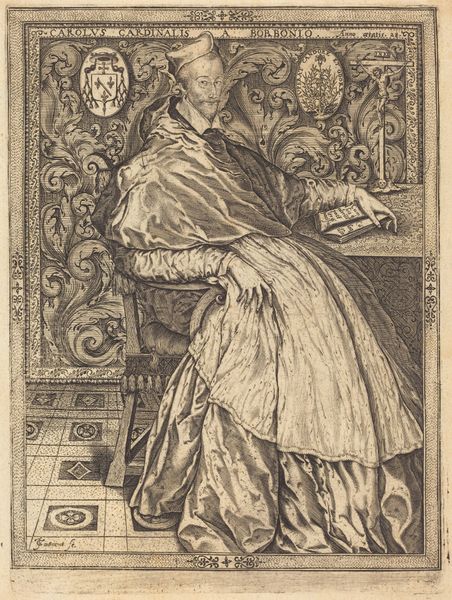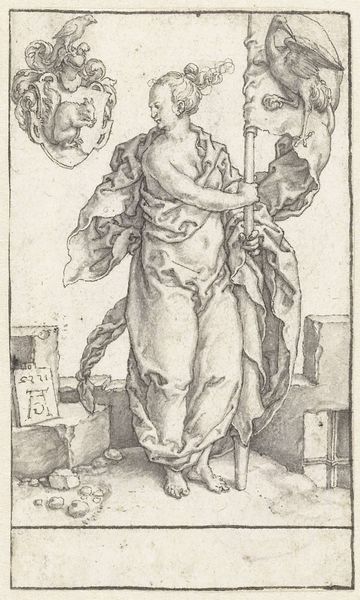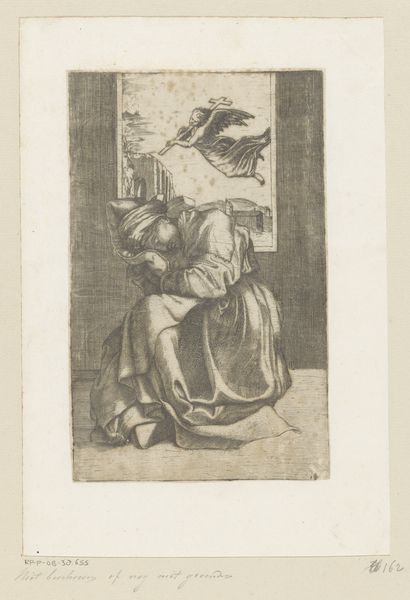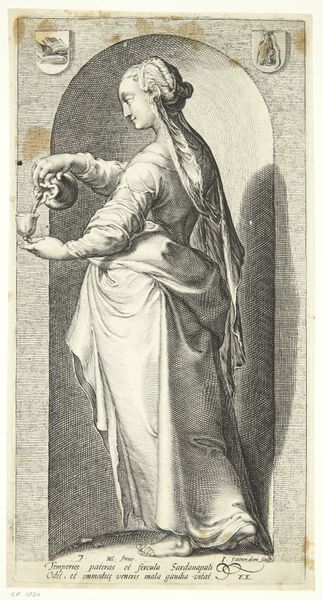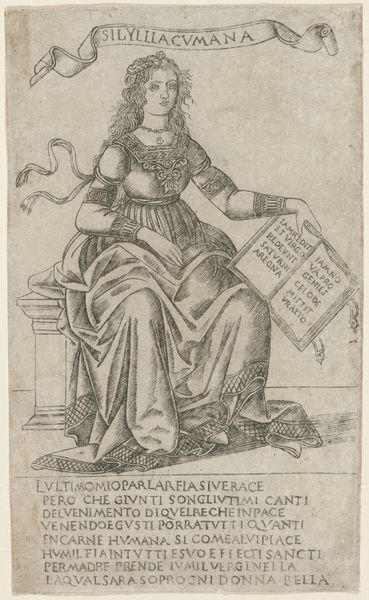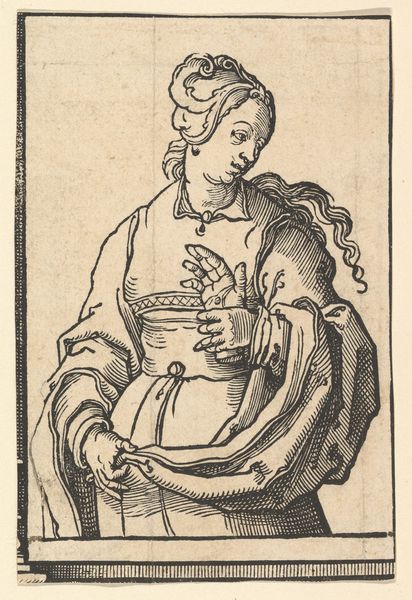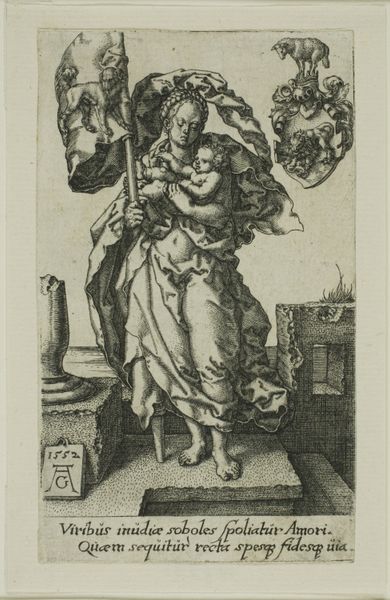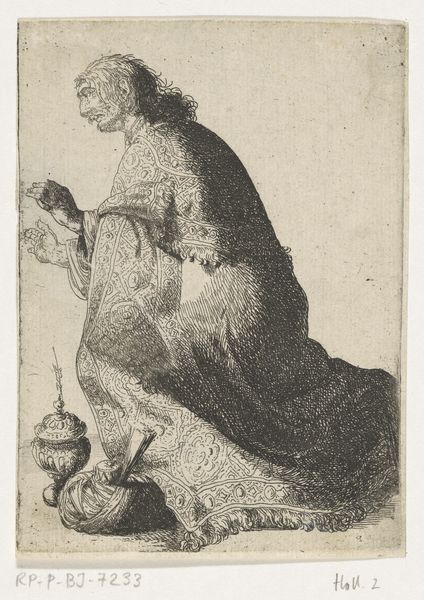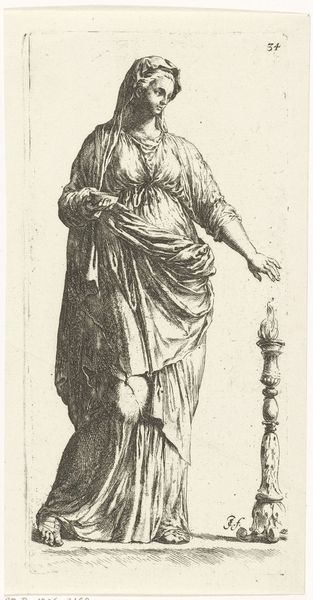
drawing, print, engraving
#
portrait
#
drawing
# print
#
figuration
#
11_renaissance
#
history-painting
#
engraving
Dimensions: 4 1/2 x 2 15/16 in. (11.5 x 7.5 cm)
Copyright: Public Domain
Curator: "Philosopher Seated near a Window," made sometime between 1514 and 1536 by Agostino Veneziano, is a striking engraving. We see the lone figure of a thinker in a private moment of reflection. Editor: My immediate reaction is that there's a sense of quiet melancholy emanating from this piece. The scholar seems lost in thought, almost burdened. The muted monochrome amplifies the somber mood. Curator: It's interesting to think about the production of this print during the Renaissance. Engravings allowed for a democratization of imagery. Rather than unique paintings for wealthy patrons, these could be reproduced and disseminated. We can consider Veneziano’s labor, carefully incising the copper plate to create this image and replicate it for the masses. Editor: Absolutely, and the rise of printmaking coincides with humanist thought flourishing across Europe. The idea of accessibility, of knowledge and art reaching wider audiences, speaks directly to those movements. This makes you wonder: who exactly were these widely reproduced prints made *for*? Who was the artist attempting to reach? Curator: And it also calls into question what constitutes "art". Is this engraving elevated simply because of its intellectual subject? Does its social context, of production and distribution, diminish its artistic value compared to a unique painting made for the Church, for example? Editor: Those are good questions. One notices also the celestial globe beneath the philosopher’s feet. Knowledge itself literally grounds him; or perhaps he grounds it. A reminder of humankind's burgeoning comprehension of the universe in the early 16th century. We also must account for the function of imagery like this to the wider public—that the proliferation of scientific or philosophical instruments also carried considerable socio-political clout for those aligned to them. Curator: Thinking about the materials here as well, copper plates became readily available due to mines in Northern Italy and beyond at the time, influencing what sorts of artworks could even *be* created. This engraving’s relatively modest scale contrasts starkly with, say, grander oil paintings meant to inspire awe through sheer size and opulence. Editor: In a way, it captures something elemental about the era. Between the widespread societal distribution, humanist elements, and innovative method of image production, Veneziano’s work shows just how rapidly both thought and access to art were transforming. Curator: Indeed, viewing this work through the lens of materials and socio-economic access allows for a deeper, more critical engagement than simply admiring a singular, beautiful image. Editor: For me, revisiting its cultural origins truly brings forward all the implications such imagery carried for early modern viewers. It really takes history, production, and distribution, into fascinating consideration.
Comments
No comments
Be the first to comment and join the conversation on the ultimate creative platform.
